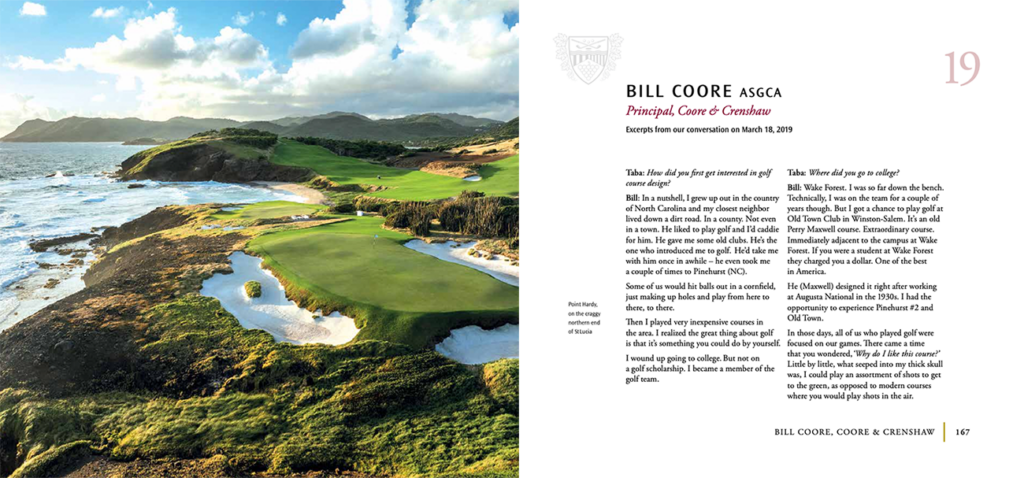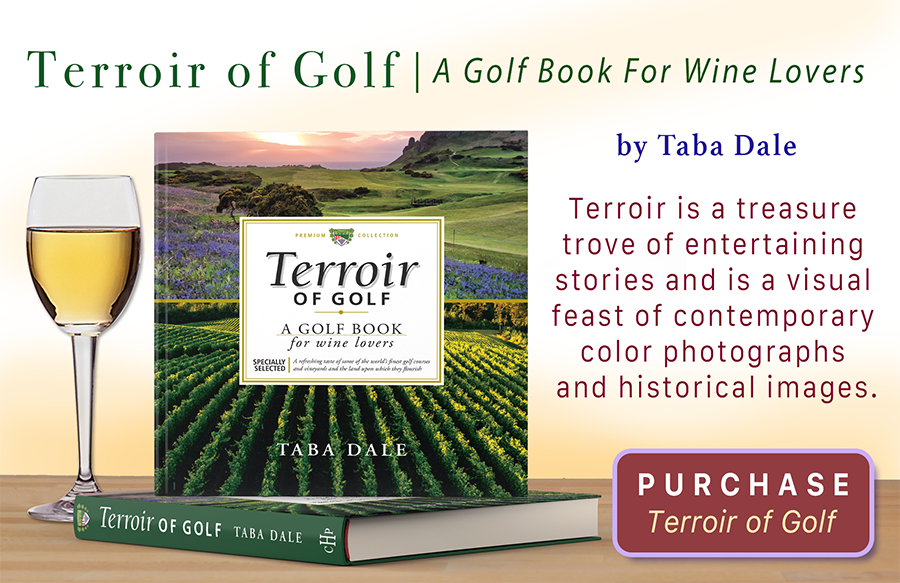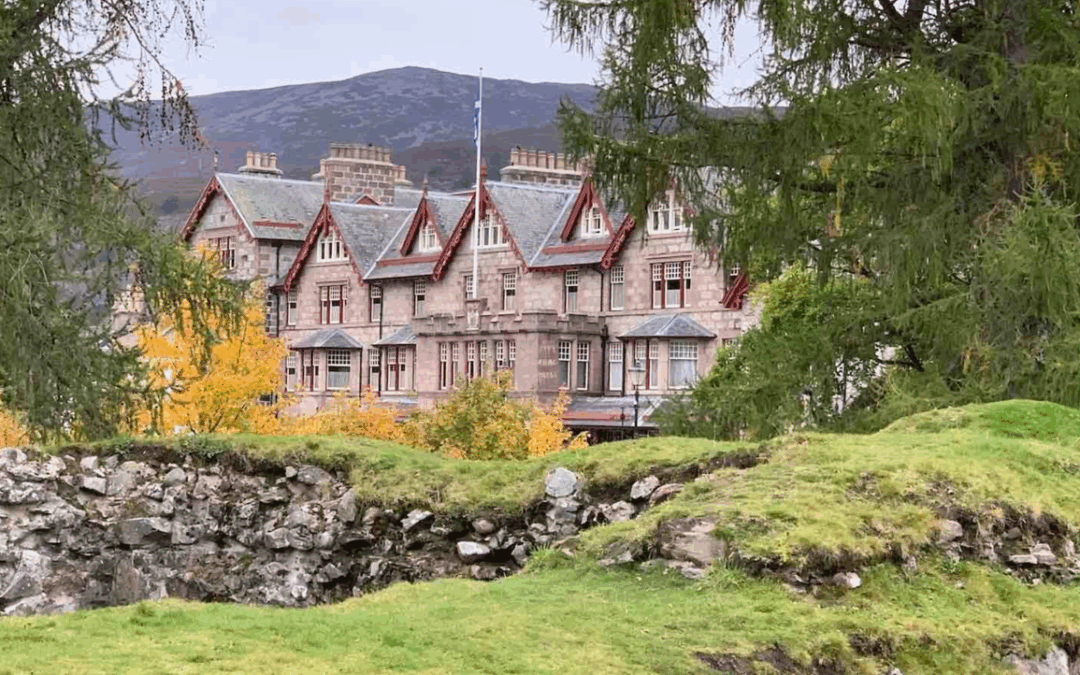
High Art in the Highlands
The Fife Arms Hotel in the Highlands of Scotland
Aberdeen to Braemar
Several months ago I learned about The Fife Arms in the Highlands of Scotland, only about 15 minutes from Balmoral Castle. Knowing that I would be in Scotland in June, I did some research and discovered the owners of the hotel are art dealers, Iwan and Manuela Wirth, and since they bought the property and elevated it to five-star status, they also filled the entire building with high-end art.
Next, I found out there is an Art Afternoon Tea with a tour of the hotel’s art collection. It did not take much persuasion to get Kevin to agree to go, since we would not be far away when we booked our stay at our favorite Marcliffe Hotel in Aberdeen.
We would certainly both be deserving a little break after finishing our Golf & Music Tour to Scotland earlier in June. Remember, if you have read the beginning of Terroir of Golf, Kevin and I are the honeybees that are always keen to get back into our Marcliffe hive.
Sadly, upon our arrival, we found out Stewart Spence had recently passed away. Stewart was awarded an MBE for services to tourism in 2015. He was a consummate professional and he also had a magnetic personality. This was a man who clearly relished his role as the director of a luxurious boutique hotel that evolved to become an institution. Stewart would always leave a letter for us in our room with a hand-written note of welcome. I wrote about this visionary man who had such an over-sized spirit in Monarch of the Marcliffe story.
It does seem, however, the Spence family appears to have found the perfect owner in the Balmoral Group, founded by chairman Sir Jim Milne. Kevin and I met him when we were having drinks in the sumptuous Drawing Room, as it was a Sunday and he was there enjoying the lively buzz.
We couldn’t help but notice there are ambitious projects underway with new construction, the centerpiece being a glass domed dining space for a new brasserie-style restaurant which will serve food all day. It is due to open in early 2026. There is so much more happening at the Marcliffe but it would take up my entire story to give you the full report!
/ CLICK ON IMAGES TO ENLARGE /
An Art Afternoon Tea at the Clunie
Back to our “Tea” that we booked for June 23rd in The Clunie. The restaurant takes its name from Clunie Water, which is a tributary of the River Dee, that runs past the hotel. We left early enough to enjoy the drive through the countryside which took us into the Cairngorm Mountains. The Cairngorms National Park covers a vast area, spanning several council areas including Aberdeenshire where the Marcliffe is located.
We mapped it out so we could arrive about an hour before the art tour began. I was excited to roam around and fortuitously met Lauren, who was to be our guide.
I peppered her with questions and she graciously pointed out things that might not have been covered with several people in tow. I had read online that the largest artwork in the hotel is a mural created by Argentinian artist, Guillermo Kuitca. This particular work reminded me of the show of Expressionists that I saw at the Tate Modern in 2024. That was, indeed, a very enlightening experience!
Lauren showed me the precise corner where Kuitca began to paint and even where his signature is. It turns out this floor-to-ceiling acrylic mural covers every square inch of the walls of The Clunie, where the Afternoon Tea is served.
Before the tour began, I noticed two Picassos, and was ecstatic when I discovered a pile of art books in the room with the larger one. My eye went right to the big Joan Mitchell book published by the Fondation Louis Vuitton. Then I spotted a book titled Monet – Mitchell, which intrigued me because in 1967 Joan Mitchell had purchased an estate overlooking the Seine in the village of Vétheuil where Claude Monet lived for several years. The book explores the artistic parallels of the two artists who lived and worked in the same area outside of Paris, but at different times.
I settled on looking at just a couple of pages — one spread of Mitchell walking in a French garden, and another, a portrait of her taken in 1946 by Barney Rosset. Mitchell and Rosset married 1949 and settled in Greenwich Village. They divorced in 1952. Rosset went on to become a pioneering book and magazine publisher (and marry four more times). In 1955 Mitchell traveled to Paris where she met painter Jean Paul Riopelle and she then lived with him for over twenty years.
The Clunie
After I somewhat sated my curiosity, the formal tour with Lauren began. She took us first into The Clunie and since I had already familiarized myself with the giant Kuitca mural, I could concentrate on the monumental Brueghel II, and learn the story of that picture. Pieter Brueghel the Younger was a Flemish painter, the son of the renowned Pieter Bruegel the Elder. He is known for his numerous copies of his father’s works. In the lower left corner of this painting are three women, added to the scene at a later date, according to Lauren. She said the different style of dress and even the brighter yellow color was intentional because the owner wanted to distinguish this picture from others that were so similar. And yes, Bruegel the Elder spelled his name differently.
The next item Lauren pointed out was the Ice Age Antlers hanging over the service window of the Clunie restaurant. Back in 2019 I wrote a story titled The Great Irish Elk. I did divulge that the beast was not exclusively Irish nor was it an elk, and it roamed all over Eurasia. My story actually focused on an ingenious artwork created by an Irish sculptor, Andrew Carragher, that was made entirely of twigs he found in a forest.
The form of this animal was striking — including the massive antlers. Andrew arrived in Liscannor with his masterpiece strapped to the bed of a trailer that he drove down from County Louth. Passing cars were nearly crashing into each other as heads swiveled around to catch a glimpse of the buck.
Before we moved along, Lauren mentioned the chandeliers were made of Murano glass. I was astonished by that fact, as I was currently reading The Glassmaker by Tracy Chevalier and it is all about a family of Murano glassmakers, that was set in the 15th century. Well, it started out that way.
Lauren then guided us through Elsa’s cocktail bar. The interior design was based on the eccentric Elsa Schiaparelli, who became known for, among other things, the use of “shocking pink.” You could have easily missed the photograph by Cecil Beaton, taken in 1937 of Schiaparelli when she was at the height of her career as a fashion designer.
/ CLICK ON BLUE ARROWS TO VIEW IMAGES /
Picasso and Zhang Enli
At last, we circled back to the Drawing Room with the larger Picasso, Nude with Man and Pipe,1967. This is thought to be based on Jacqueline Roque. She was the muse and second wife of Pablo Picasso and their marriage lasted 12 years until his death in 1973. He created over 400 portraits of her and she was the most featured woman across his entire oeuvre. The male figure is an iteration of a musketeer, one of the stand-ins for the artist himself.
Perhaps not covering as many square feet but categorized as the second largest artwork at the Fife Arms is the painting on the ceiling of the Drawing Room. It is an organic and magical sea of blues, greens, yellows and purple, created by Zhang Enli and is titled Ancient Quartz, 2018. The inspiration is derived from cross-sections of Scottish agates, that when split open reveal a dazzling array of color.
Our tour concludes in the lobby area with Lauren gathering us around the second, earlier Picasso: Tete de Femme,1938. It is of his mistress and muse Marie-Thèrése Walter. They did have a long affair and had a daughter together, Maya. This is a very rare work as it is the only painting in which Picasso included one of his own poems within the composition. Picasso began writing poetry in 1935 when he was 54 years old. From the Musée Picasso Paris website I learned that he wrote over 340 poems between 1935 and 1939.
There is plenty more to see, like the Wall of Heads. Lauren had made us aware that taxidermy was an art form in its day. She warned people about going into a certain room, incase they were sensitive to seeing these stuffed animals. I get it. We live in a very different age.
I was enchanted by the drawing of “A Stag Shot by John Brown” done by Queen Victoria. It is pencil and watercolor on paper and exquisitely framed incorporating the Fife Arms plaid in the outer mat. It really took me by surprise to see how adept she was at creating this sketch. I loved learning that it was a favorite occupation that she shared with Prince Albert during their summer visits to the Highlands of Scotland.
The Fife Arms Drawing Room with a long view of the earlier Picasso: “Nude and Man With A Pipe,” 1967.
The Art Tea
When the tour finishes the Tea begins with an extraordinary array of savory treats. One must save room for the sweets, that included Key Lime Pie and a Red Velvet Cake. Alas, we asked to put the scones in a box to take with us.
The various teas are presented in an extensive stand-alone menu. I went for something exotic sounding: Rooibis Blueberry. It was absolutely delicious and the smell was intoxicating. It was hard to resist champagne but I’m glad I did!
It enabled me to enjoy our delicious dinner at the Marcliffe more than ever so I could savor the wine without feeling guilty.
Terroir of Golf: Let’s Talk Scotland
Turnberry
The Marcliffe
Nairn
The Old Course
Kingsbarns
Shiskine
Machrihanish
The Machrie
Lochgreen House
The Claret Jug

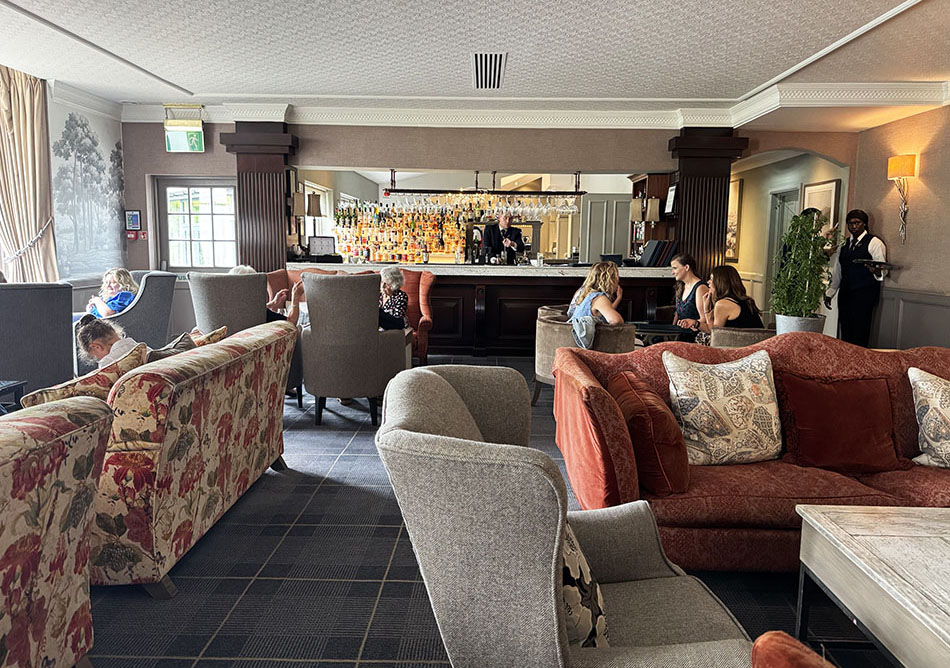
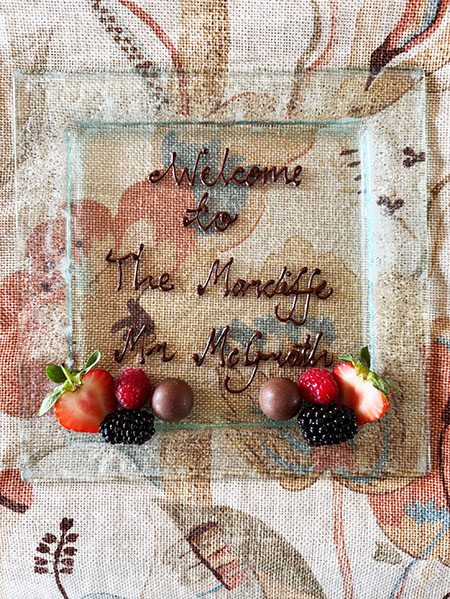
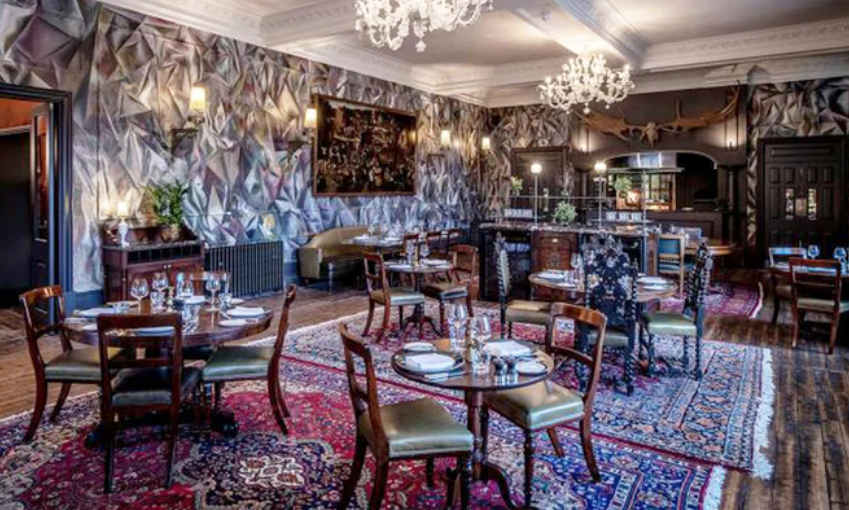
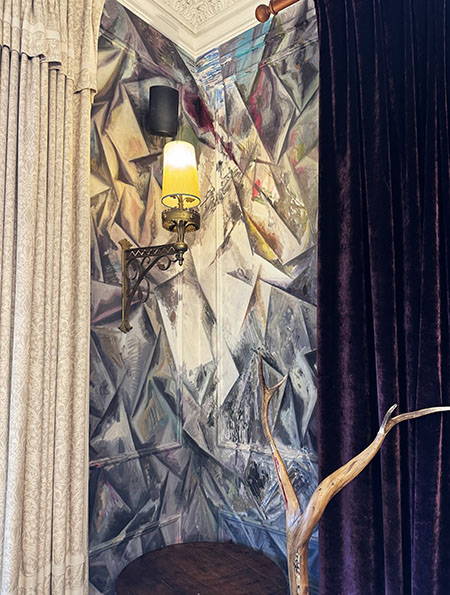
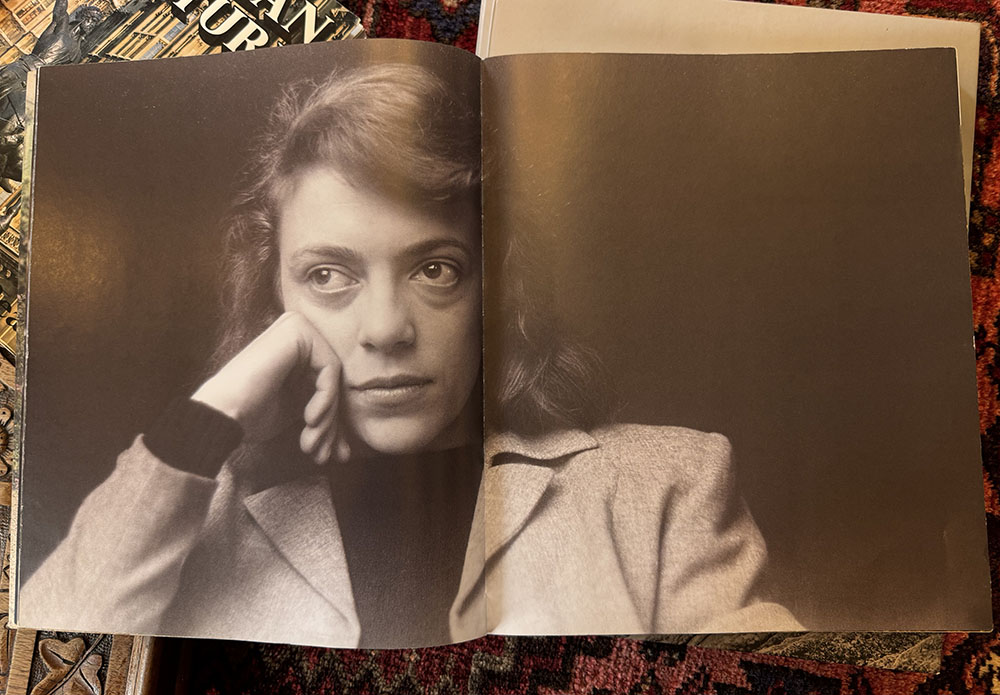
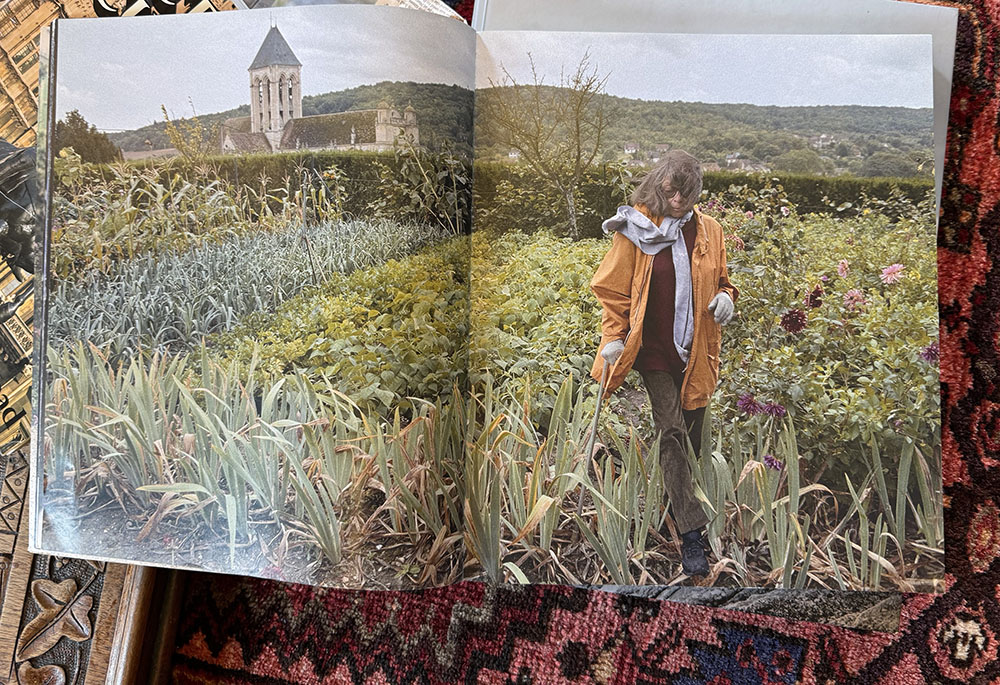

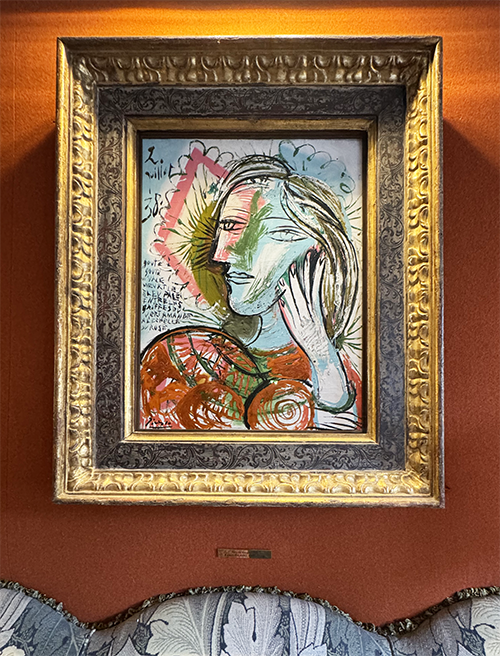
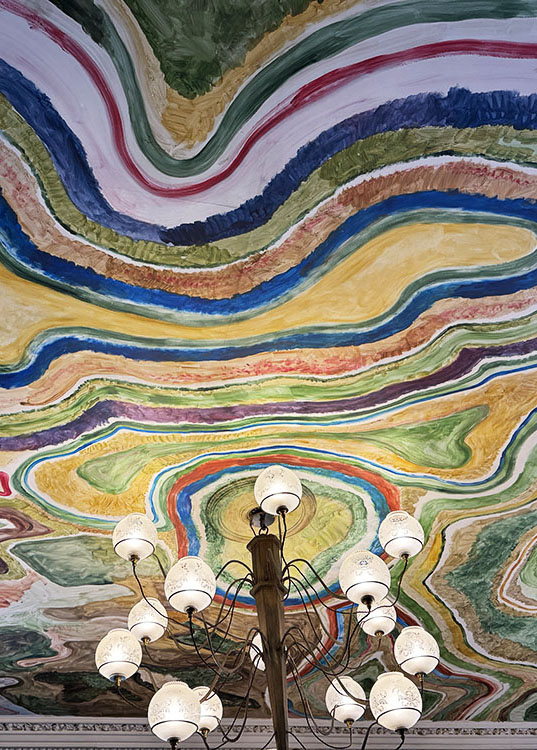
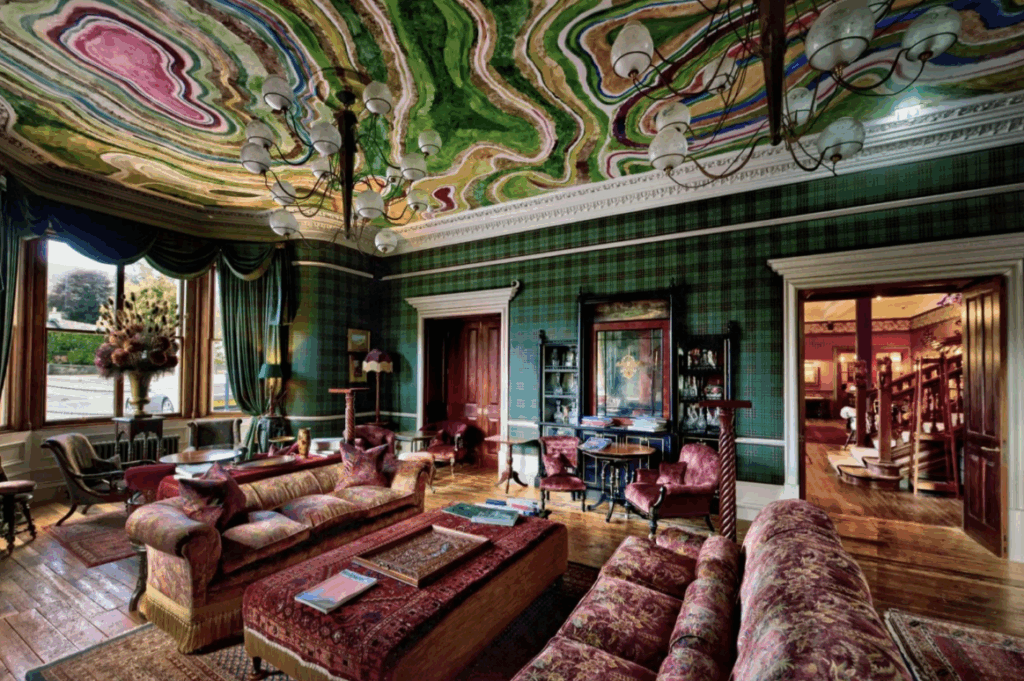
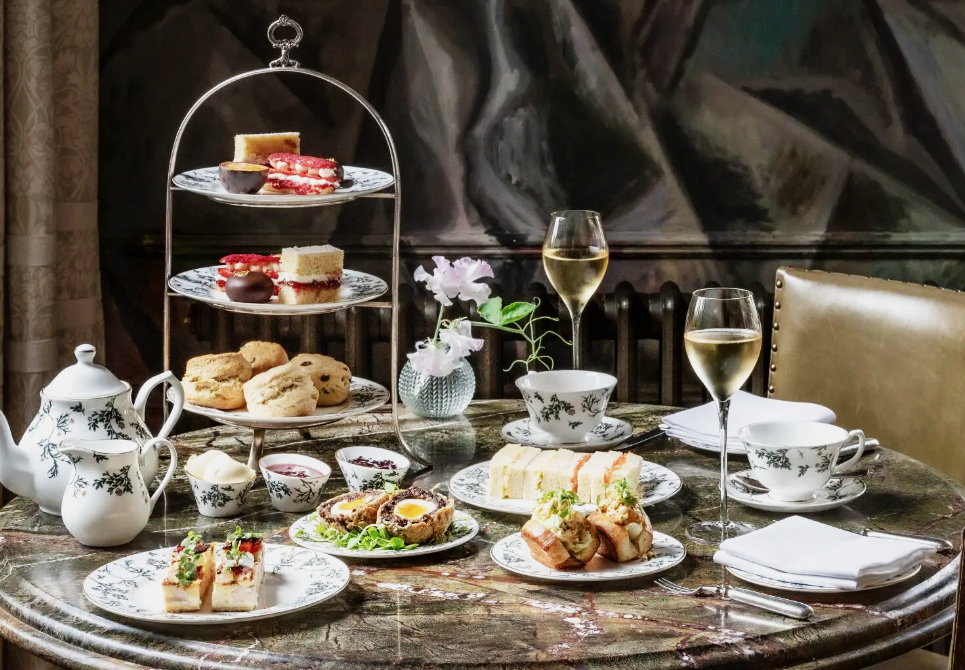

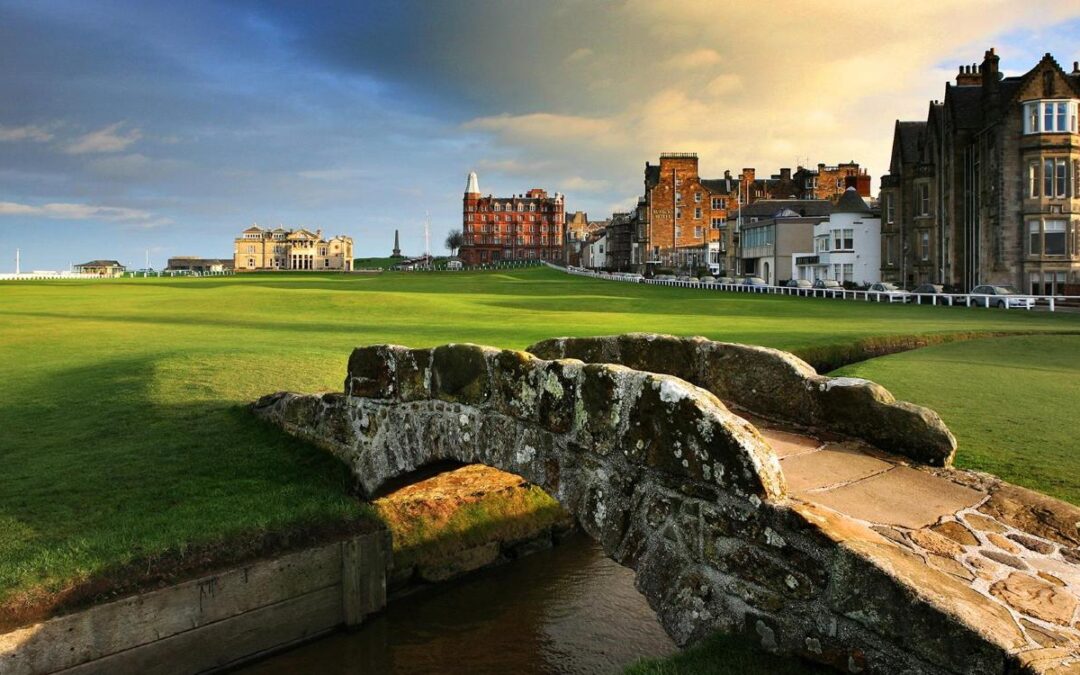
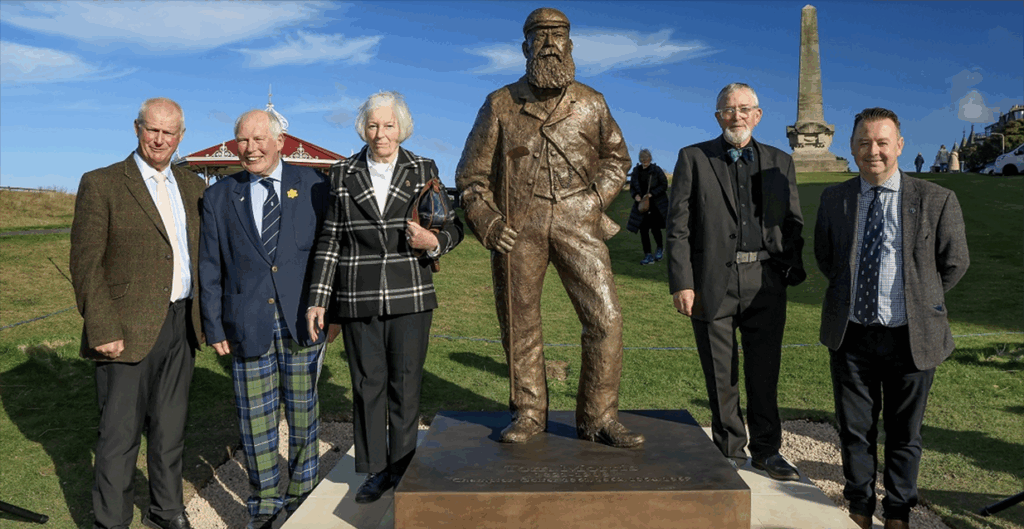
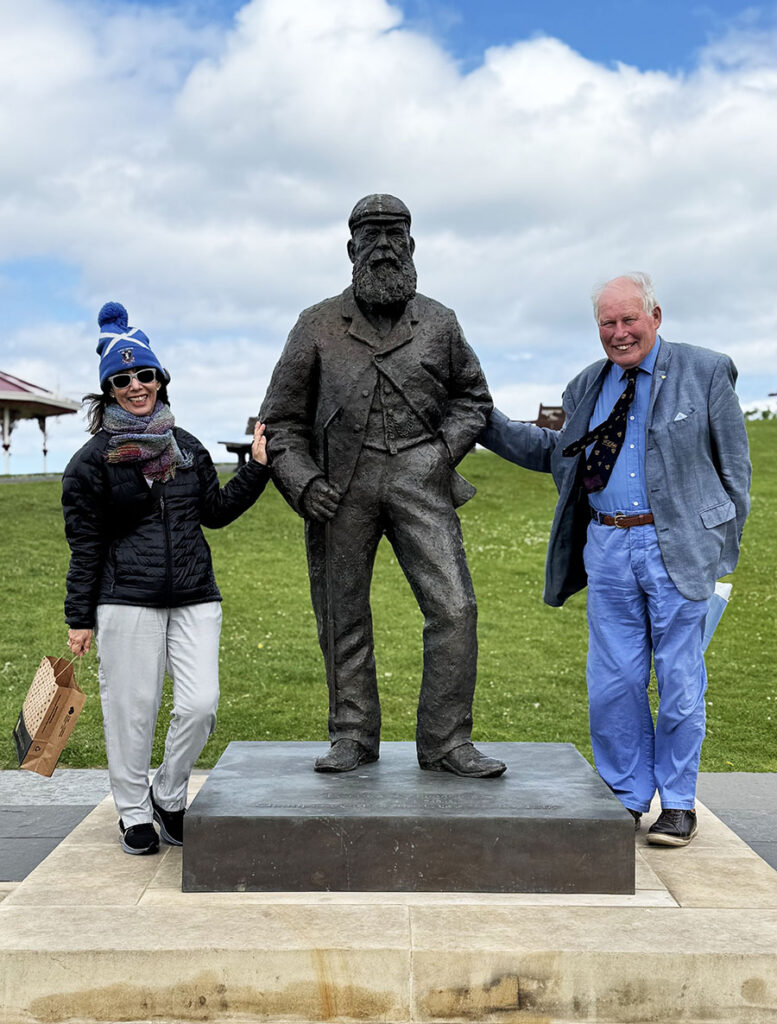
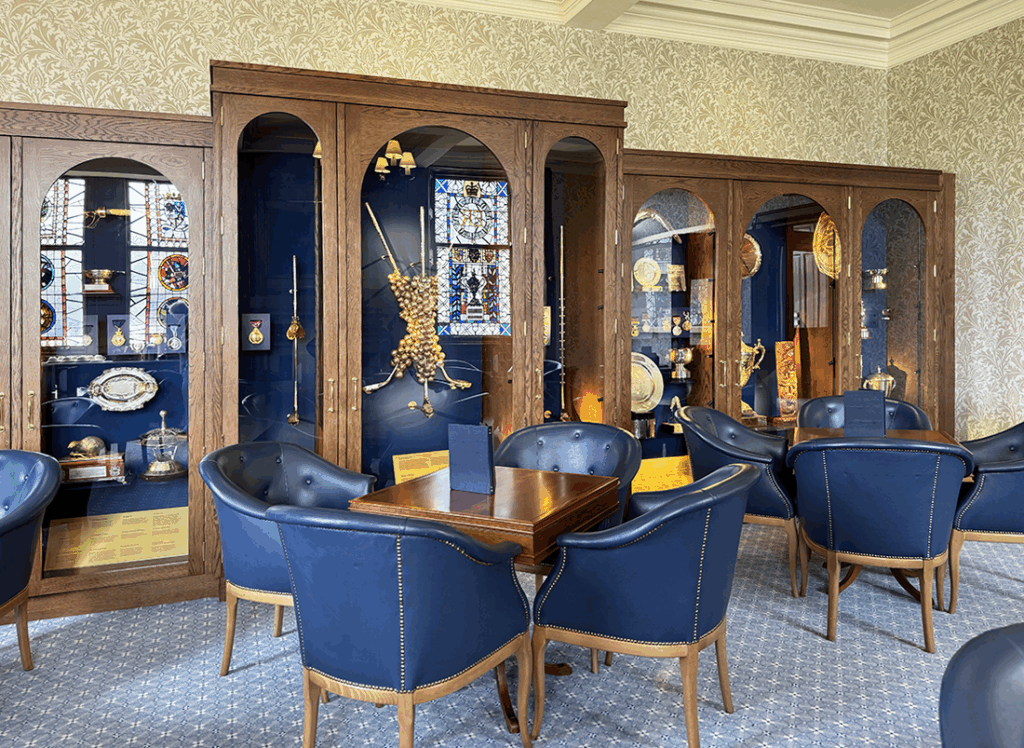
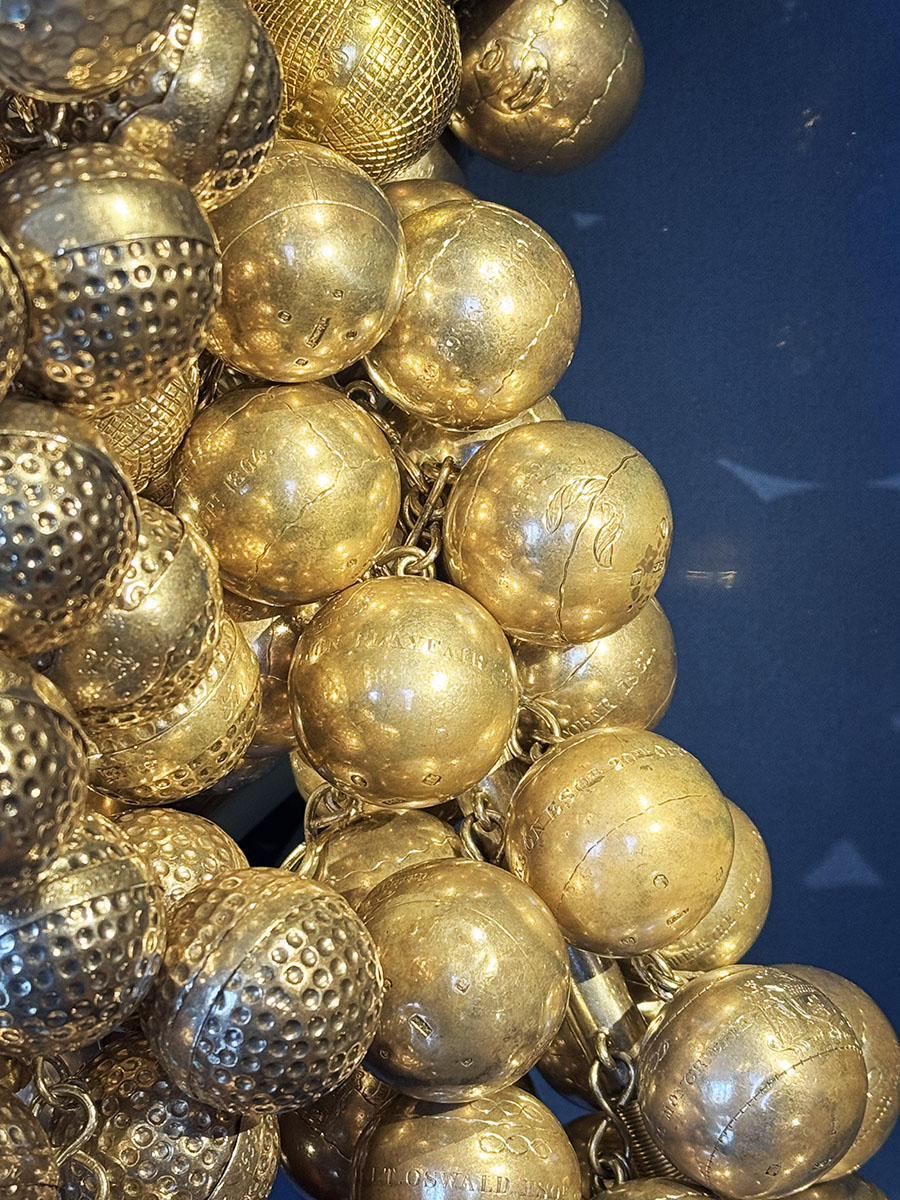
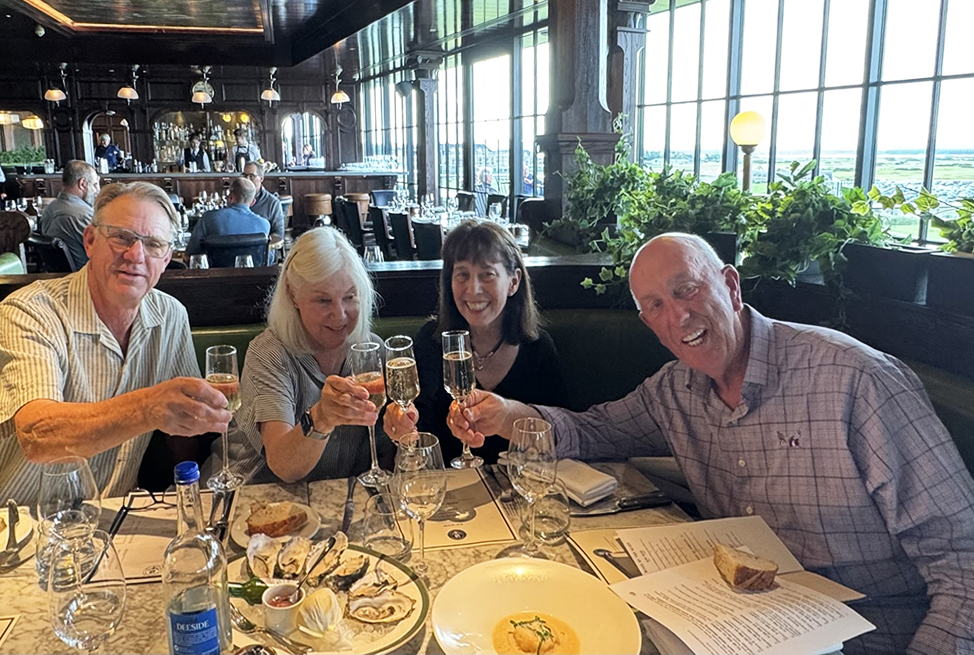
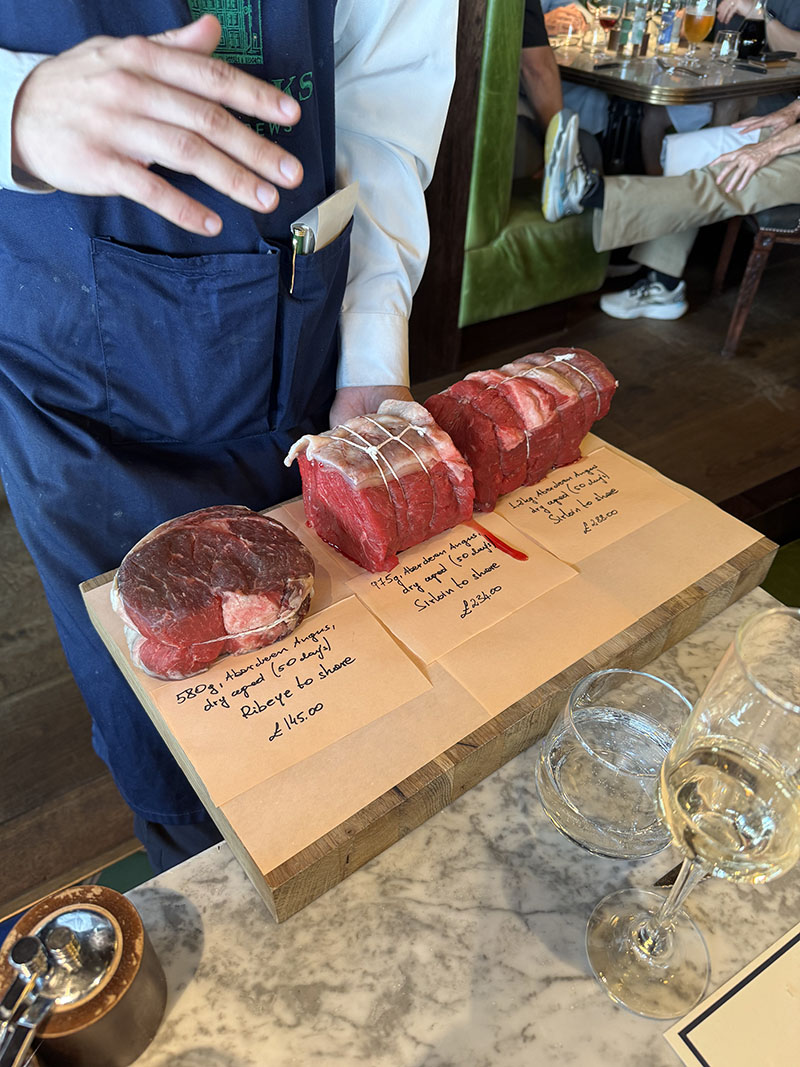

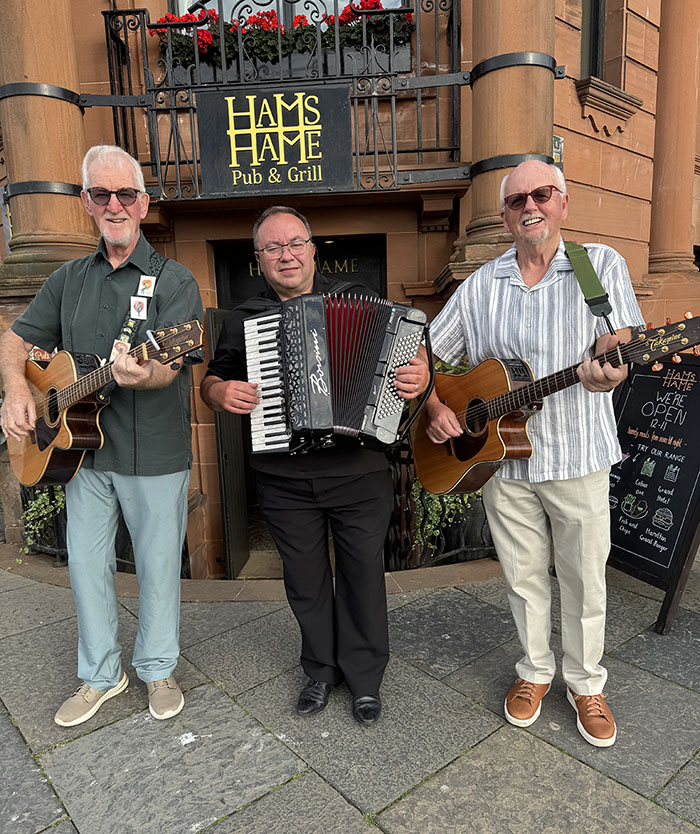
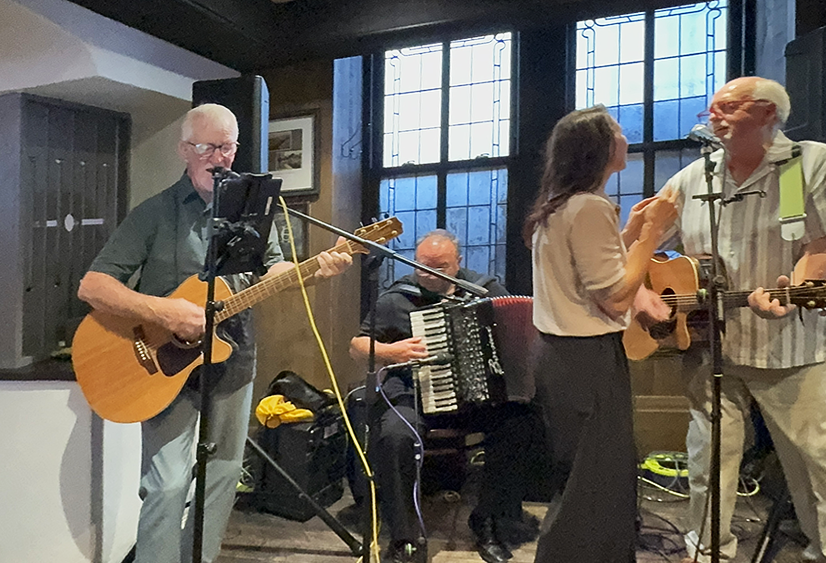

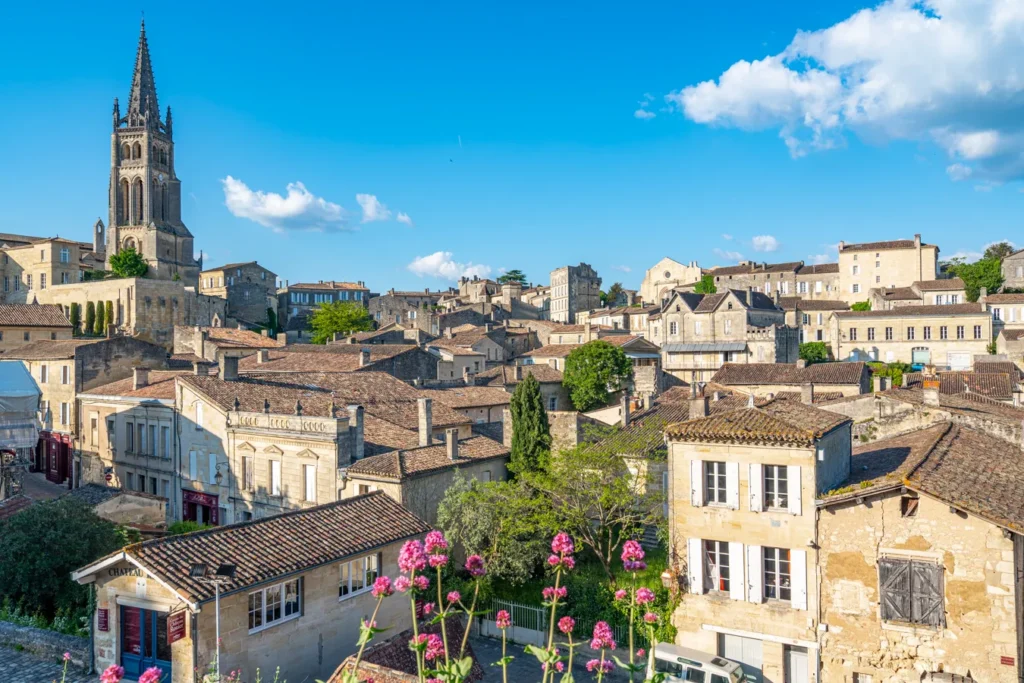
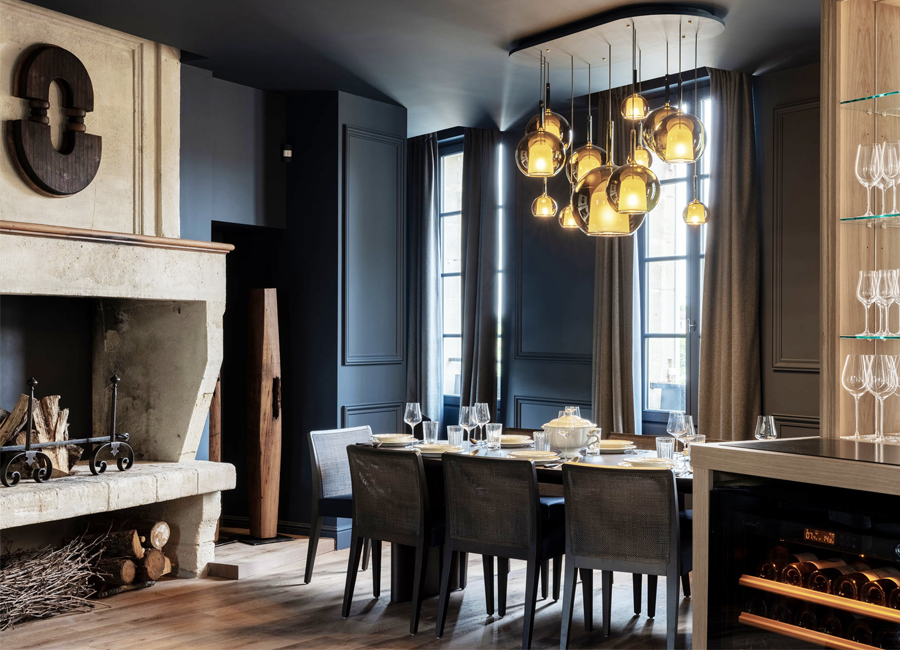 At Hôtel Porte Brunet every piece of furniture, perfectly placed, just so, was crafted beautifully, like a work of art.
At Hôtel Porte Brunet every piece of furniture, perfectly placed, just so, was crafted beautifully, like a work of art. Intimate interior of the reception area of our accommodations in St Emilion at Hôtel Porte Brunet. Full of interesting wood carvings and furniture by a couple of different artists.
Intimate interior of the reception area of our accommodations in St Emilion at Hôtel Porte Brunet. Full of interesting wood carvings and furniture by a couple of different artists.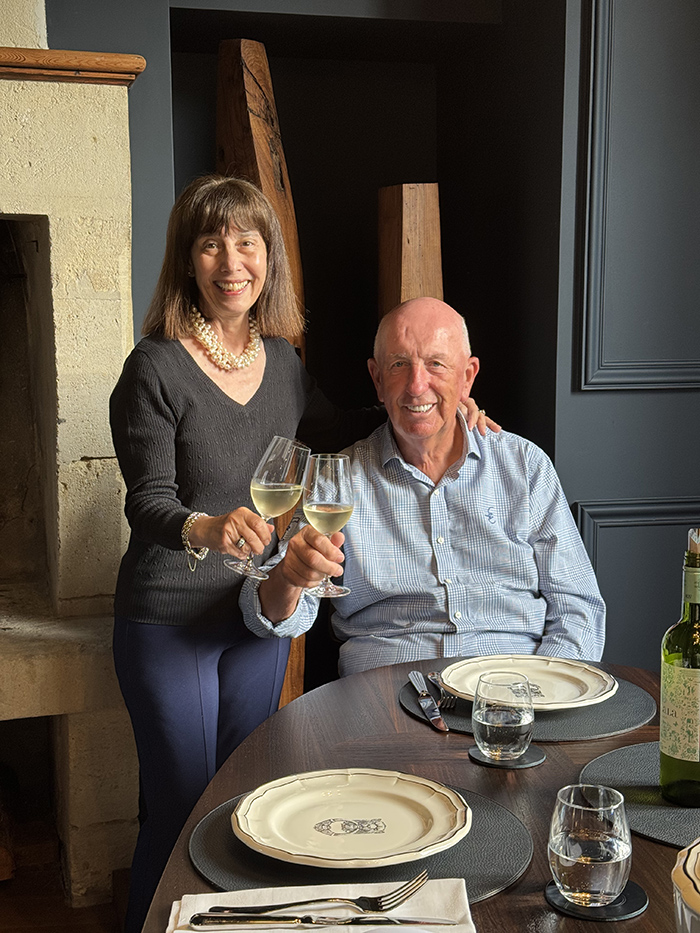 We are treated to an exquisite dinner at Hôtel Porte Brunet, cooked by the owner, Benoît Trocard.
We are treated to an exquisite dinner at Hôtel Porte Brunet, cooked by the owner, Benoît Trocard.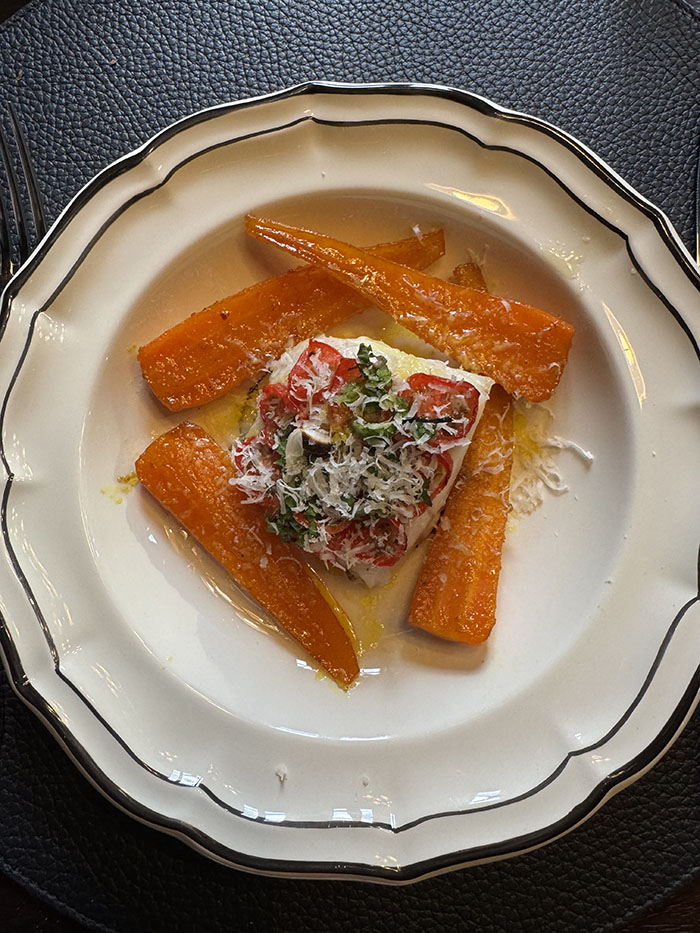 The cod is fresh from a nearby bay and carrots from the garden are sweetened with honey from the hives.
The cod is fresh from a nearby bay and carrots from the garden are sweetened with honey from the hives.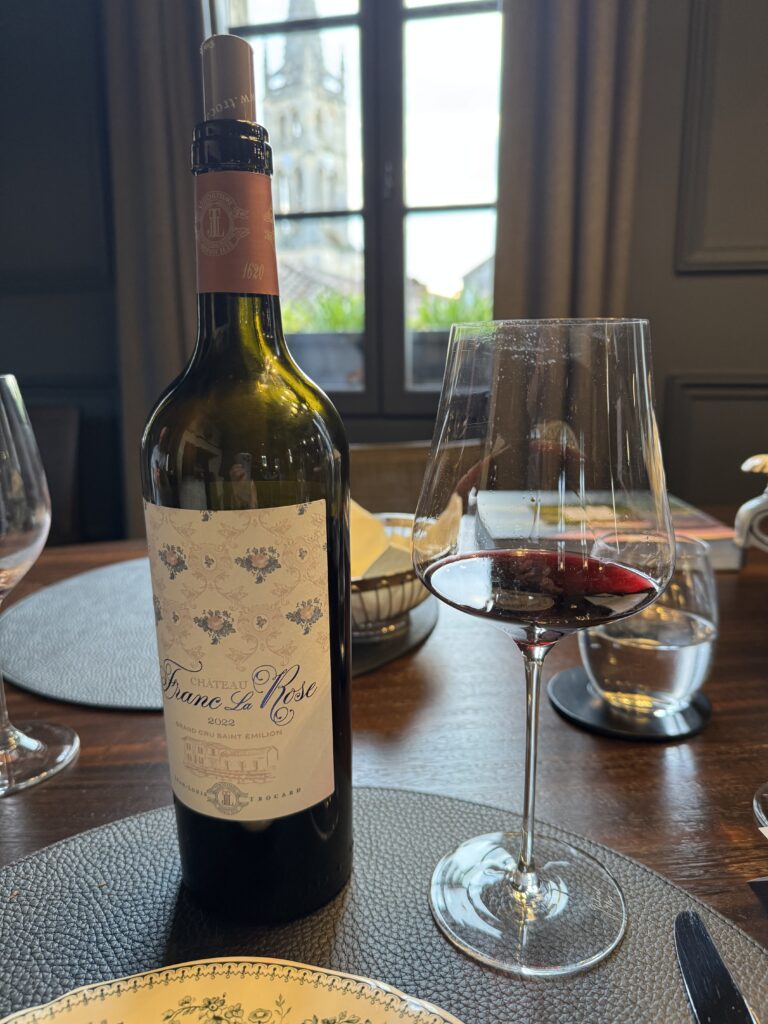 2022 Chateau Franc La Rose with the pattern of the roses on the label reproduced from the wallpaper of his grandparent’s home.
2022 Chateau Franc La Rose with the pattern of the roses on the label reproduced from the wallpaper of his grandparent’s home.
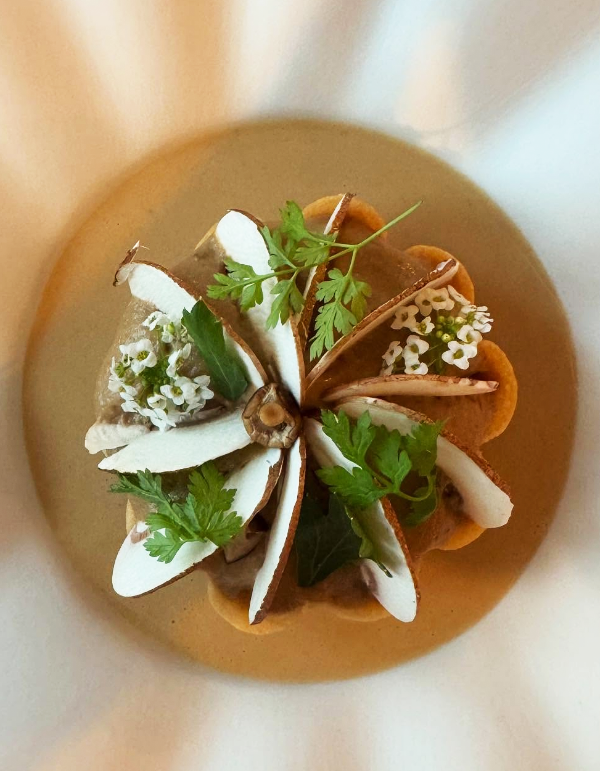 This work of art made with mushrooms from the Logis de la Cadène quarries was cradled in a buckwheat tartlet.
This work of art made with mushrooms from the Logis de la Cadène quarries was cradled in a buckwheat tartlet.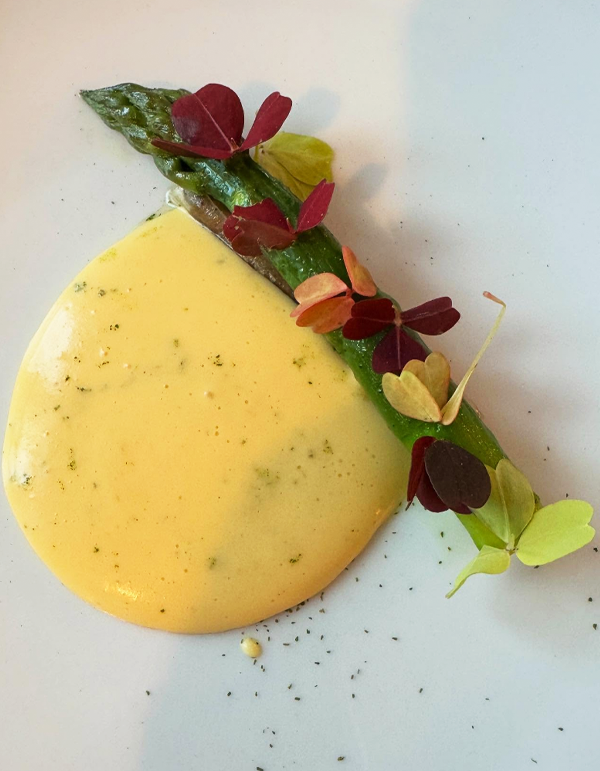 The Confit of green asparagus from Landes, pistachio praline and a lovely sauce.
The Confit of green asparagus from Landes, pistachio praline and a lovely sauce. 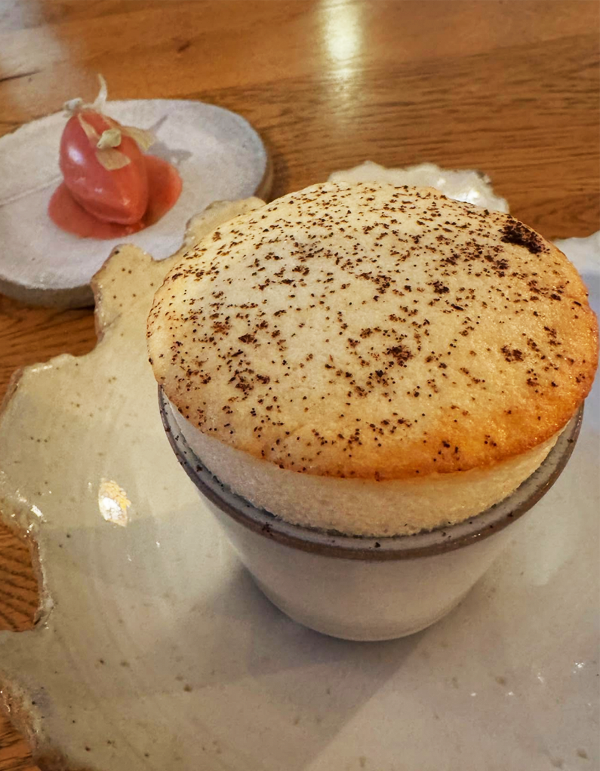 The extraordinary Soufflé with vanilla from Comoros, Rhubabrb cream and meadowsweet. We have been wowed by the inventiveness of Thiebaud Gamba.
The extraordinary Soufflé with vanilla from Comoros, Rhubabrb cream and meadowsweet. We have been wowed by the inventiveness of Thiebaud Gamba.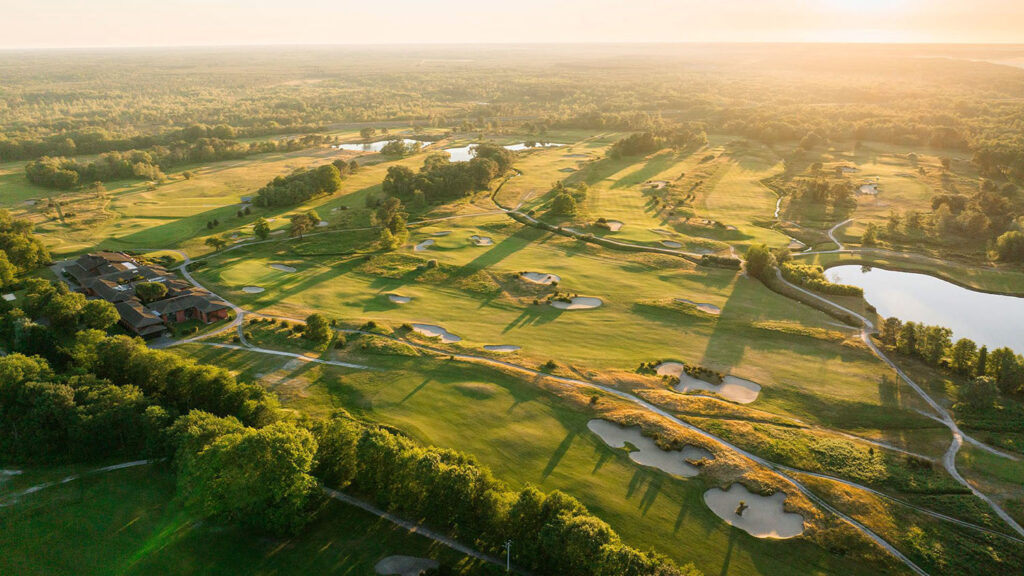
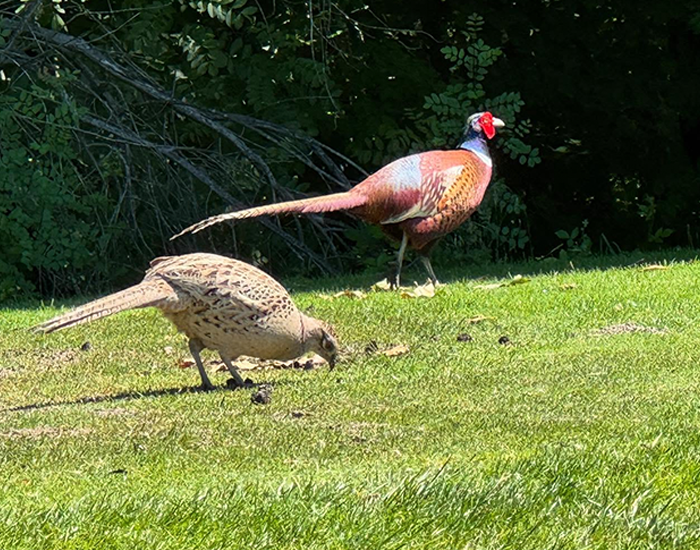 We were arriving at the 2nd tee of the Vignes course at Cabot Bordeaux and this magnificent pair of pheasants hardly paid any attention to us.
We were arriving at the 2nd tee of the Vignes course at Cabot Bordeaux and this magnificent pair of pheasants hardly paid any attention to us.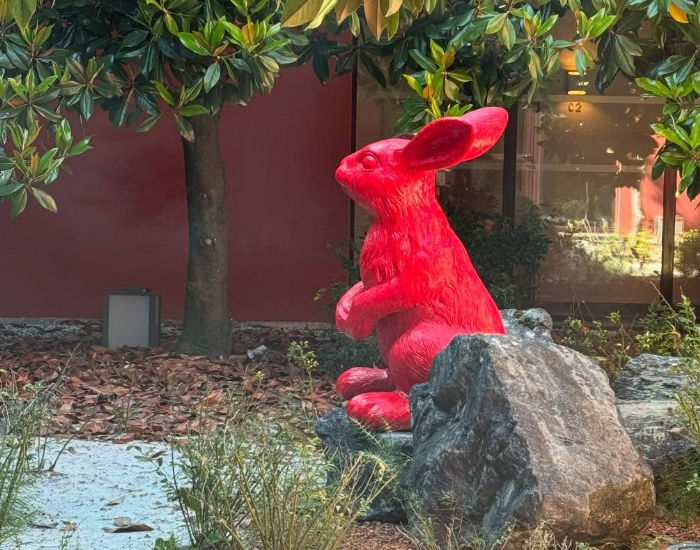 Whimsical sculpture of a red bunny in the interior courtyard at Cabot Bordeaux.
Whimsical sculpture of a red bunny in the interior courtyard at Cabot Bordeaux. 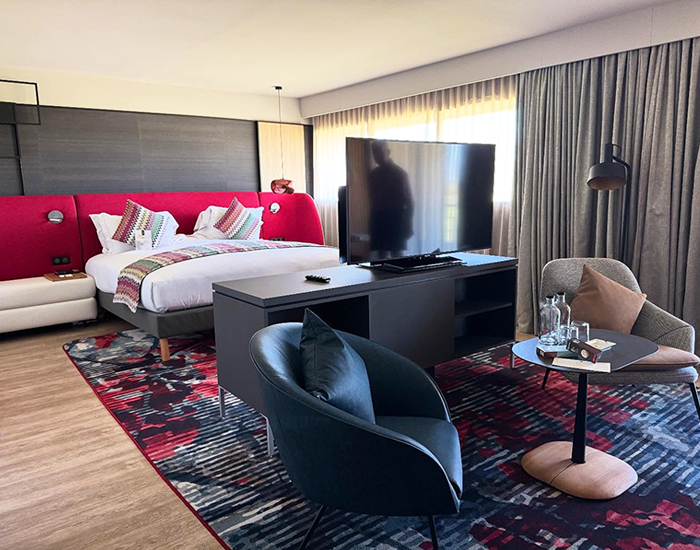 We have checked into our sumptuous suite at Cabot Bordeaux ahead of our tee time in the Vignes course.
We have checked into our sumptuous suite at Cabot Bordeaux ahead of our tee time in the Vignes course.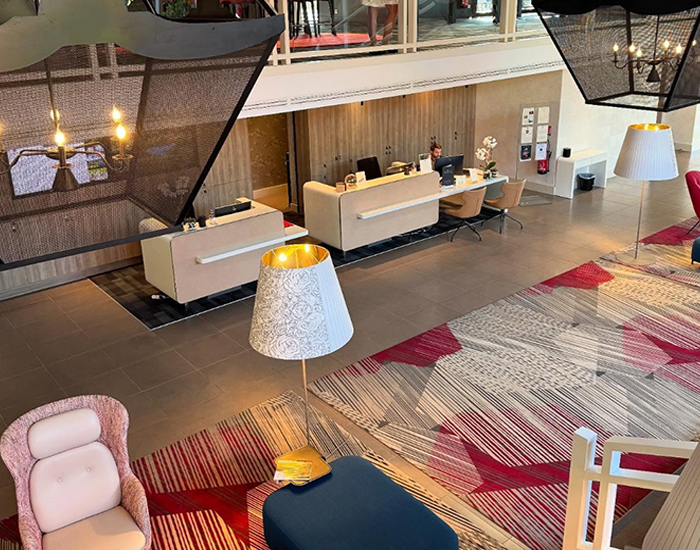 The lobby of Cabot Bordeaux (formerly known as Golf du Medoc) with mid century modern decor.
The lobby of Cabot Bordeaux (formerly known as Golf du Medoc) with mid century modern decor.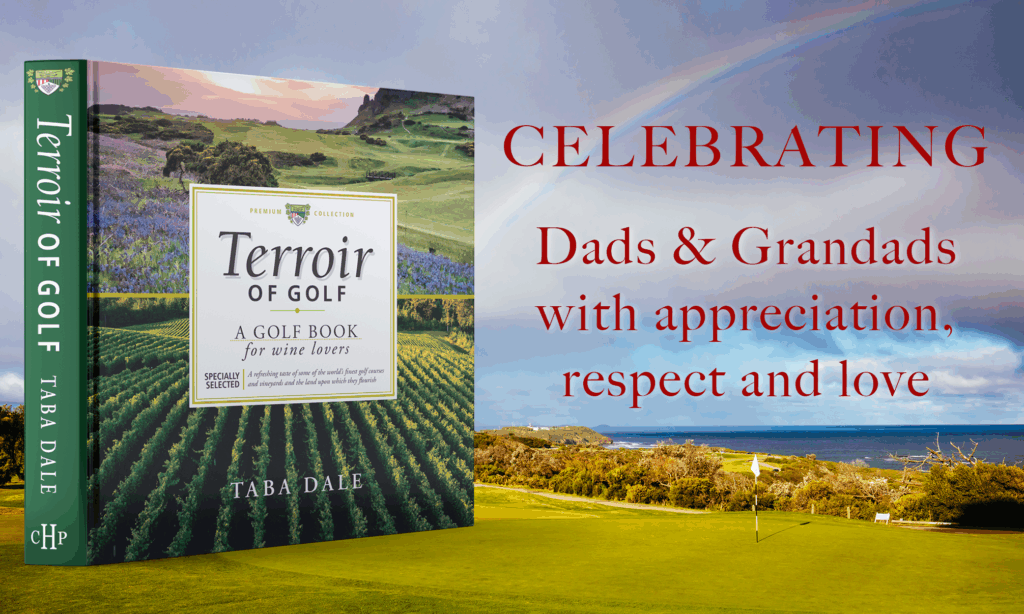
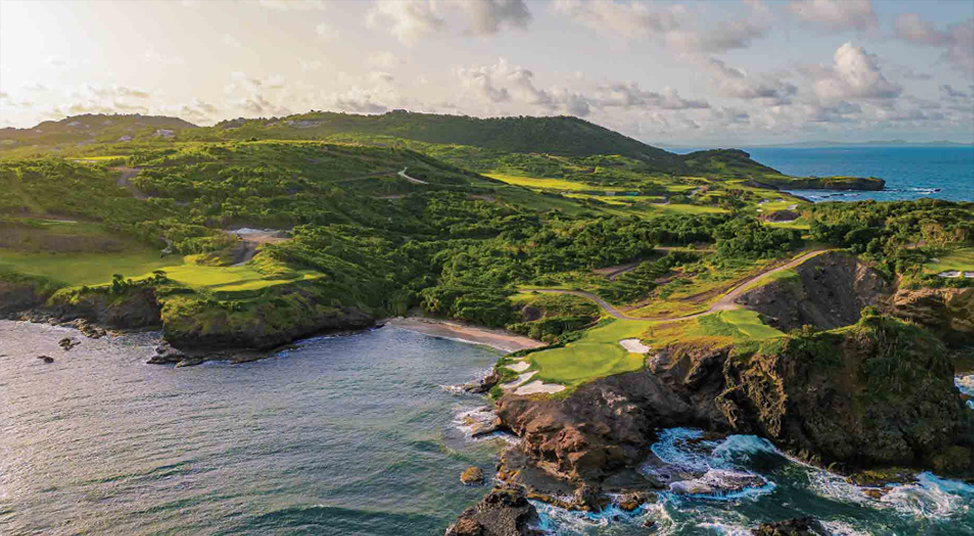
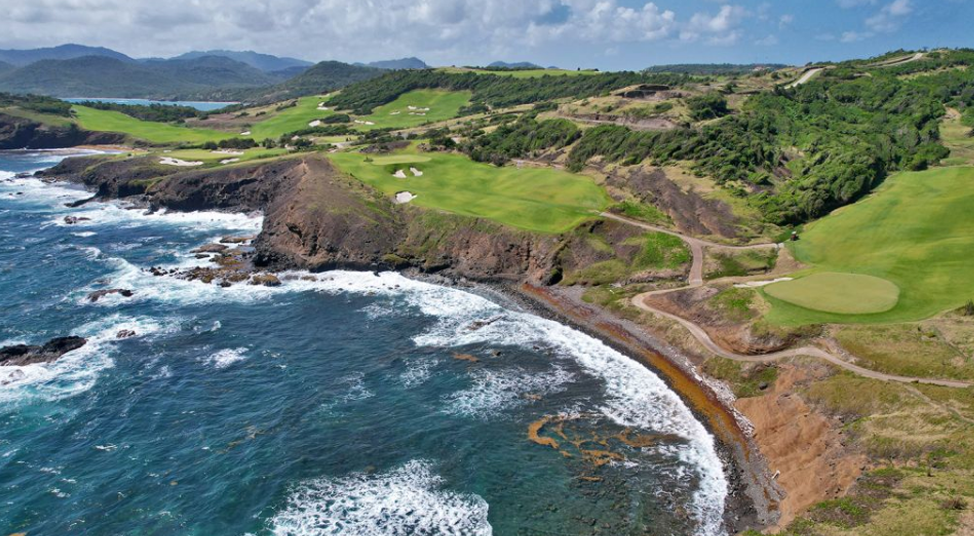
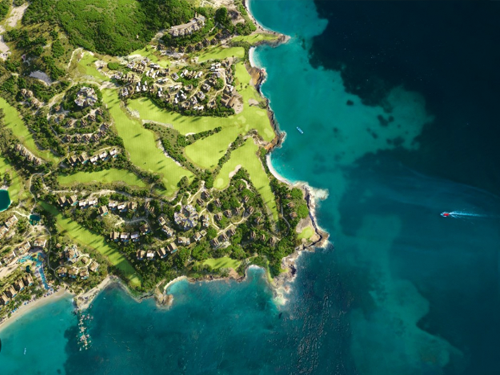 Cabot Saint Lucia offers real estate opportunities that combine the magic of island living with a strong sense of community.
Cabot Saint Lucia offers real estate opportunities that combine the magic of island living with a strong sense of community. All lots and turnkey residences enjoy close proximity to Point Hardy Golf Club, as well as an array of amenities.
All lots and turnkey residences enjoy close proximity to Point Hardy Golf Club, as well as an array of amenities.
 Taba and Kevin with friends Tom Kaufman and Cheryl Willner playing golf at Point Hardy
Taba and Kevin with friends Tom Kaufman and Cheryl Willner playing golf at Point Hardy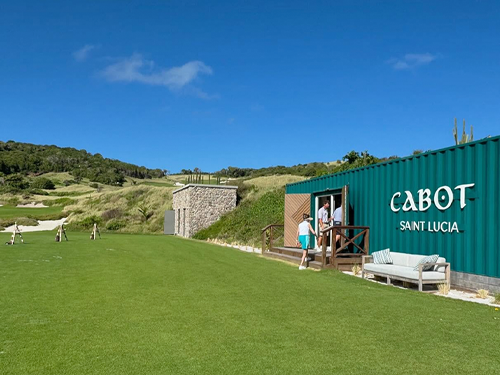 Cabot St Lucia temporary Pro Shop
Cabot St Lucia temporary Pro Shop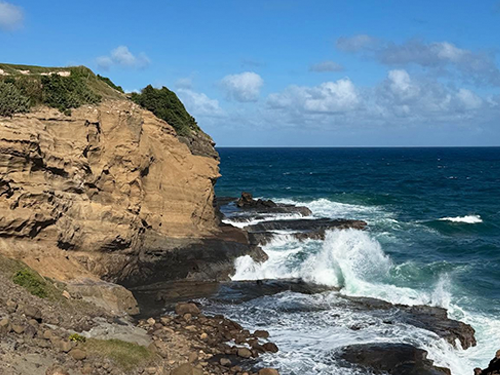 Enormous waves crashing on rocky coastline at Point Hardy’s 17th hole.
Enormous waves crashing on rocky coastline at Point Hardy’s 17th hole.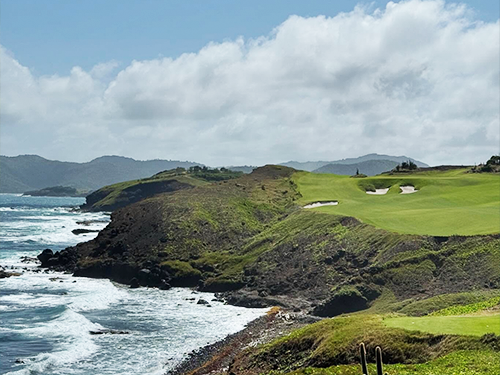 Hole #8 at Point Hardy
Hole #8 at Point Hardy